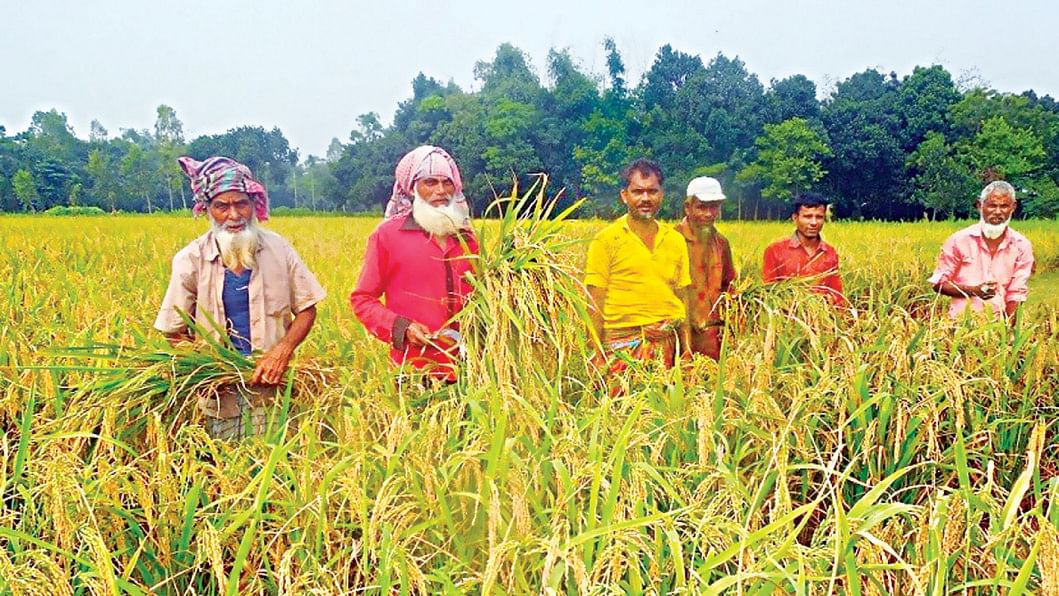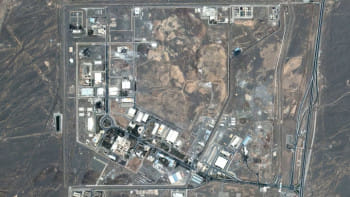Harvesting of early Aman varieties begins

The harvesting of early Aman paddy varieties has begun in five northern districts, namely Lalmonirhat, Kurigram, Gaibandha, Nilphamari, and Rangpur, a relief amid rising prices of rice at home and a growing threat of food crisis globally.
Abu Bakkar Siddique, deputy director of the Department of Agricultural Extension (DAE) in Nilphamari, inaugurated the harvesting of the second-largest paddy crop in Bangladesh on September 13 amid enthusiasm in the district.
Aman is regarded as a magical crop as it helped eliminate the localised food crisis known as Monga in the northern region of the country.
The term Monga had been in use for long in the region to mean a near famine from the middle of July to the middle of October. This was because after the completion of transplanting Aman seedlings, farm workers used to become unemployed.
As a result, they could not buy foodstuff for their families and hence passed days unfed or half-fed.
The economic scenario in the industrially underdeveloped northern region changed dramatically more than a decade ago after the Bangladesh Rice Research Institute started introducing the early varieties of the crop
The economic scenario in the industrially underdeveloped northern region changed dramatically more than a decade ago after the Bangladesh Rice Research Institute (BRRI) started introducing the early varieties of the crop.
The varieties include BRRI paddy-33, BRRI-38, BRRI paddy-57, BINA paddy-7, China paddy, and some other high-yielding crops. They have gained popularity as they take only 90 to 100 days to mature compared to 140 to 150 days needed by traditional varieties to ripen, according to Obaidur Rahman, deputy director of the DAE in Rangpur.
The early varieties provide farmers additional two months, allowing them to cultivate potatoes twice before the beginning of the Boro season, which starts in April.
This year, Aman has been cultivated on 6.20 lakh hectares of land to produce 18.1 lakh tonnes of rice. Early varieties were sown on 1 lakh hectares of land, up 6 per cent from a year ago, said the regional office of the DAE in Rangpur.
Thanks to the harvesting, a festive mood is prevailing in the villages such as Muchirhat of Badarganj upazila and Kursha of Taraganj upazila in Rangpur, and Uttar Durahuti and Ramganj of Kishorganj and sadar upazila in Nilphamari.
Saiful Islam, a farmer in Muchirhat village, cultivated BRRI-38 on five bighas of land and received 80 maunds of paddy. One maund equals 40 kilogrammes.
He sold all of the paddies from the field and earned Tk 88,000 whereas he had to spend Tk 40,000 to cultivate them.
Islam said the production cost was higher than the previous year owing to an increase in the prices of diesel and fertilizer.
In Bangladesh, the government has had to adjust upwards the prices of diesel and fertiliser as their costs have rocketed internationally owing to the supply disruptions driven by the Russia-Ukraine war.
"The prices of paddies are also higher this year," the farmer said.
Binod Bihari Roy, a farmer in Ramganj village, said that after harvesting the early variety of the paddy, he has started preparing the land to grow potatoes.
The acreage under the cultivation of the early varieties of Aman is expanding fast in the region as farmers benefit from growing the crops during the lean period.
"This allows farmers to grow four crops in a year instead of three previously. And this means additional incomes for them," said Shah Alam, additional director of the regional office of the DAE in Rangpur, which covers the five districts.
The early harvesting came at a time when rice prices in Bangladesh have shot up.
Coarse rice price stood at Tk 49.50 per kg in August, the highest since 2008, data from the Food and Agriculture Organisation showed.
Globally, food prices in July were 13 per cent higher than a year ago, said a recent CNBC report, citing figures from the UN agency.

 For all latest news, follow The Daily Star's Google News channel.
For all latest news, follow The Daily Star's Google News channel. 



Comments